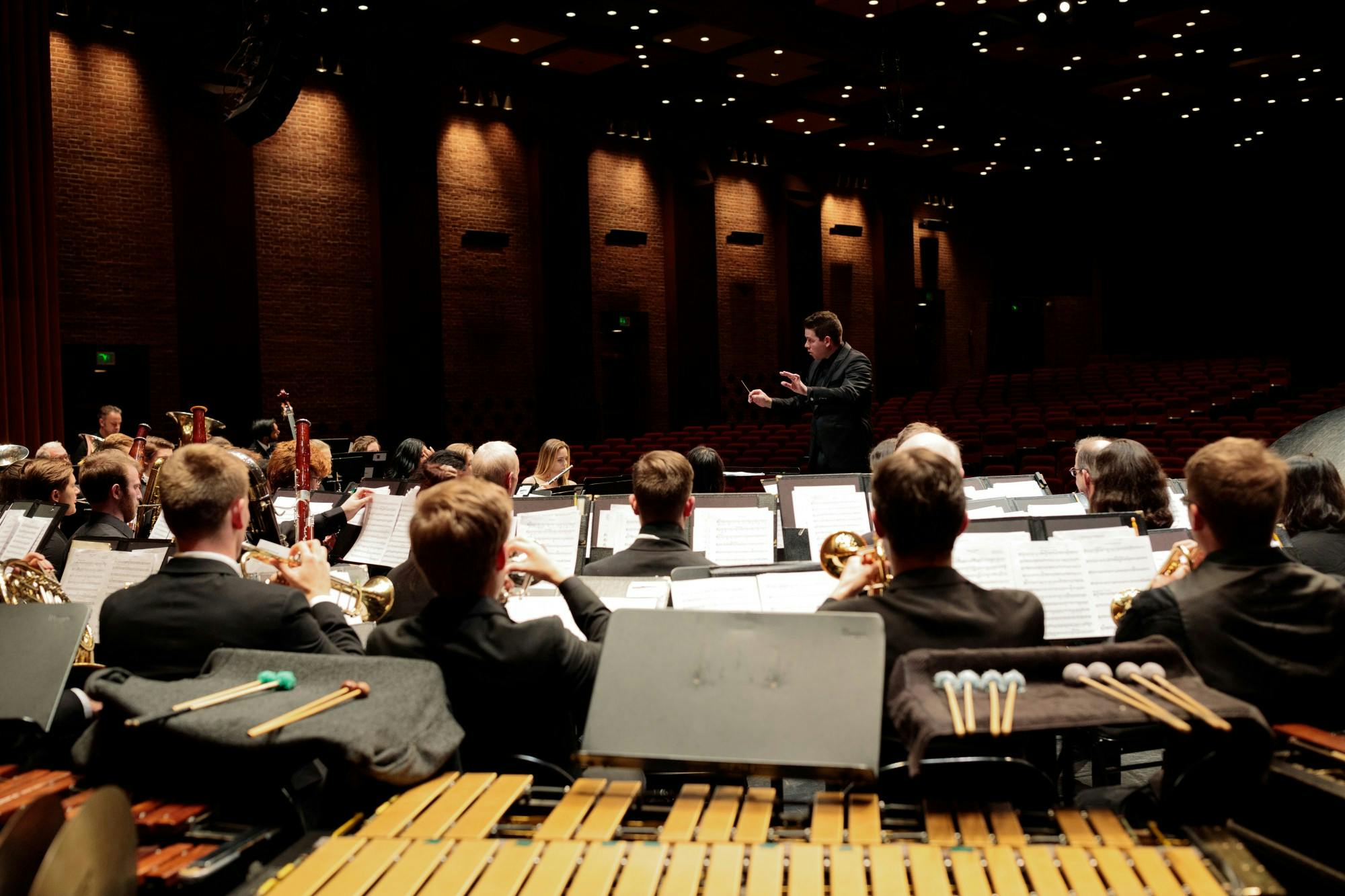This Saturday at 7:30 p.m., the Hopkins Center for the Arts will host the Dartmouth College Wind Ensemble in Spaulding Auditorium as they perform a variety of pieces from the 2020 Dartmouth Wind Ensemble Composition Competition. Among this musical selection will be the world premiere of two compositions: “Journeys III,” composed by Quinn Mason, and “Cerro y Nube,” composed by Eduardo Aguilar. The performance was arranged by Wind Ensemble Director Brian Messier and features both student performers and musicians from the Upper Valley community.
Titled “The Hero’s Journey,” the performance centers on the archetypal story of a protagonist’s progression in the face of obstacles, an artistic trope popularized by author Joseph Campbell.
Messier said the use of music as a tool to convey narrative is a fixture of Wind Ensemble performances.
“I usually try to create an arc to a program,” he said. “I think this one more than any other program has achieved that goal.”
He explained that each instrumental element plays a role in articulating the larger narrative to the audience.
“There’s a solo clarinetist who starts very softly and independently…almost as a stand-in for the hero of the program,” Messier said. “And then all of the works on the program are kind of on the topic of journey, discovery, transcendence and arrival. So there’s kind of this musical progression.”
He noted that “Journeys III” has special significance because student members of the Wind Ensemble selected it out of over 240 compositions. Messier added that he believes “Journeys III” to be Mason’s strongest entry into the symphonic genre.
“The way he crafts it is with this positive motion, this constant sense of direction and drive,” said Messier. “It’s just a really effective work that I think has resonated with the students, and I think will be an effective work for the players. But it will also be enjoyable for the audience.”
Messier also appreciates “Cerro y Nube,” which translates to “Hill and Clouds.”
“What I hope the audience experiences is the clouds are kind of diffuse,” he said. “It’s almost like refraction of the themes of the music and things kind of crumble apart. And then you still have the hill, the mountain peaks through the clouds. In that piece, you get these moments of clarity, where things come together, and then they refract again.”
Annie Tang ’25, a flutist in her first term with the Wind Ensemble, shared Messier’s enthusiasm for the performance.
“There’s been a lot of growth and understanding when approaching the new pieces, especially because most of these pieces haven’t been officially recorded yet,” said Tang. “And we’ve all been working our hardest, especially Dr. Messier, to portray exactly what the composers wanted.”
Tang attributes much of the Wind Ensemble’s success to its rehearsal environment, which she describes as friendly and conducive to facilitating bonds between ensemble members. Yet, she also acknowledged the difficulties the COVID-19 pandemic presents in terms of producing a consistent practice environment.
“With COVID, it’s been really tough to have everybody be together in the rehearsals because there’s always going to be a certain amount of people out because they’re feeling sick,” she said.
Messier also commented on these challenges, but noted the dedication of the students.
“The flip side of [the pandemic difficulties],” Messier added, “is how resilient and committed the students have been in spite of that, and what we’ve been able to achieve.”
For Ian Smith ’24, a trombonist who joined the ensemble during his freshman winter, the pandemic provided an opportunity to rekindle his passion for his instrument.
“I kind of took a sabbatical [from music] during my gap year, because I was traveling a good bit,” Smith said. “And then the whole world blew up with COVID and I got back into it.”
Like Tang and Messier, Smith shares enthusiasm for the performance’s compositions. Smith noted his special admiration for the way many pieces in this Saturday’s program depart from the traditional canon of pieces he has played, particularly in the case of “Cerro y Nube.”
“Many of us come from backgrounds in symphony orchestras, where you play classic pieces by European or North American white guys from the 1700s and 1800s,” he said. “So this Mexican composition that [Messier] has hosted has definitely produced some very interesting music. And he’s done a nice job in this program with weaving it into what we might consider more traditional pieces.”
Tang also expressed admiration for the compositions. She reflected on how they create a message that is uplifting for audiences and performers alike.
“The path through life and achieving our goals is, as the title says, a journey, and it's full of struggles,” Tang said. “But ultimately, all of the struggles will pay off … And I think that the pieces reflect that … because they’re parts. But all the pieces and all the parts come together in the end to produce the melody.”




